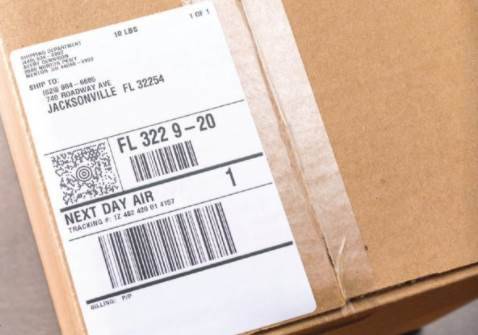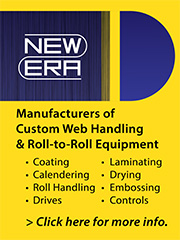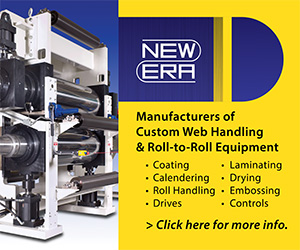Sustainability and the eCommerce Explosion
- Published: November 14, 2020
By Kelli Messer, Marketing Director, Paper & Film at Avery Dennison Label and Packaging Materials North America
 The simultaneous progression of eCommerce platforms and the rise of their use is placing new demands on the packaging industry. Companies are working overtime to make products and catalogs available online, anytime. In turn, customers expect fast, free shipping. To respond to this explosion of consumer pressure, companies in a wide variety of industries require label technology that can handle the fast-moving economy.
The simultaneous progression of eCommerce platforms and the rise of their use is placing new demands on the packaging industry. Companies are working overtime to make products and catalogs available online, anytime. In turn, customers expect fast, free shipping. To respond to this explosion of consumer pressure, companies in a wide variety of industries require label technology that can handle the fast-moving economy.
Retail consumer trends have been converging for some years now. Online retail has grown 300 percent between 2000 and 2018, according to the U.S. Commerce Department. That figure is expected to only increase; the eCommerce sector grew by 11.4 percent in 2018, and in the U.S., companies shipped 14 billion parcels that year alone. And early estimates show that due to the coronavirus pandemic, eCommerce shows no signs of slowing down.
As with many segments of the modern economy, eCommerce’s growth is driven by the proliferation of mobile devices. Increasingly, brands are finding that the more they cater to a customer base that is dominated by mobile shoppers, the better their results.
All of this activity illustrates the urgency of the modern online economy. A recent study highlights those trends; a survey by Alix Partners, conducted in late 2017 showed that the maximum delivery time expectations have contracted. In fact, the study showed that while back in 2012, shoppers would accept a maximum delivery time of 5.5 days, by 2017 those expectations had ratcheted down by a full day to 4.5 days’ time.
Converters are being pressed too. From material research and innovation with adhesives and labels that are environmentally safer, today’s converters need to help customers navigate the complexity of sustainability issues to develop smarter, more responsible and more efficient strategies that anticipate consumer needs.
An outgrowth of all of this is the ensuing need to manage the waste stream.
The Recyclability Challenge
As eCommerce grows, so does the demand for clean, fully recyclable packaging and labeling. The boom in eCommerce dovetails with a dramatic reduction in landfill space.
New efforts to stem the tide are underway at the regulatory level. The U.S. Postal Service began a project in 2017 intended to, among other things, establish a recyclability metric to identify what adhesives might be considered environmentally benign. These adhesives had to meet the agency’s guidelines for postage stamp adhesives, but also to satisfy the paper industry’s recyclability metrics.
The U.S. Postal Service standards compelled the Tag and Label Manufacturing Industry (TLMI) to create their own Standards for Recycling Compatible Adhesives. Doing so allows the USPS and the TLMI to sync up their requirements of manufacturers.
The paper recycling industry faces a number of challenges during the processing of recycled paper. Perhaps the largest problem is also the smallest element. During processing, pressure-sensitive adhesives combined with recycled paper can become small particles, known as “stickies.” These particles can build up on equipment and cause defects in the final product paper. Because of stickies, paper companies can contend with lower product selling prices, downtime and equipment cleanup costs. The cost of stickies to paper companies is estimated to be more than $700 million per year.
The response to these challenges of urgency and sustainability has required some innovation from labeling companies. To help paper companies recycle papers and boxes that have adhesive labels on them, and to meet the U.S. Postal Service’s standards of recyclability, some new thinking has been brought to bear.
Urgency Begets Innovation
To help improve the recyclability of paper packaging, companies are developing new adhesives that are compatible with the existing recycling stream. All temperature adhesive technologies are being developed for paper facestocks that are specially designed for shipping, weigh scale and warehouse and logistics applications.
Converters should look for an adhesive that is repulpable; this means the adhesive is fully recyclable and products labeled with this platform can go back into the paper recycled waste stream. The product should also meet the testing criteria of the TLMI Recycling Compatible Adhesive LRP-2 Lab Test Protocol. These tests confirm that the adhesives meet key criteria of the recycling industry and ensures that the label may be fully recycled at end life.
Recycled or recovered paper fiber offers economic and ecological benefits. And, paper recycling reduces greenhouse gas emissions from landfilled paper and saves landfill space. Time is of the essence; the United States is running out of landfill space due in part to packaging that fails to meet the need of the modern economy. According to Waste Business Journal, over the next five years, total landfill capacity in the U.S. is forecast to decrease; by 2021 only 15 years of landfill capacity will remain.
The situation presents an opportunity. Even as consumer demands for speed and convenience increase, packaging and labeling companies are wise to respond to the challenges presented by their products after those sales are closed.
About the Author
Kelli Messer is marketing director, Paper & Film with Avery Dennison Label and Packaging Materials North America. The company’s TrueCut™ All-Temp Adhesive Technology, or AT2550, is fully repulpable and purpose-built for paper facestocks designed for shipping, weigh scale and warehouse and logistics applications.







